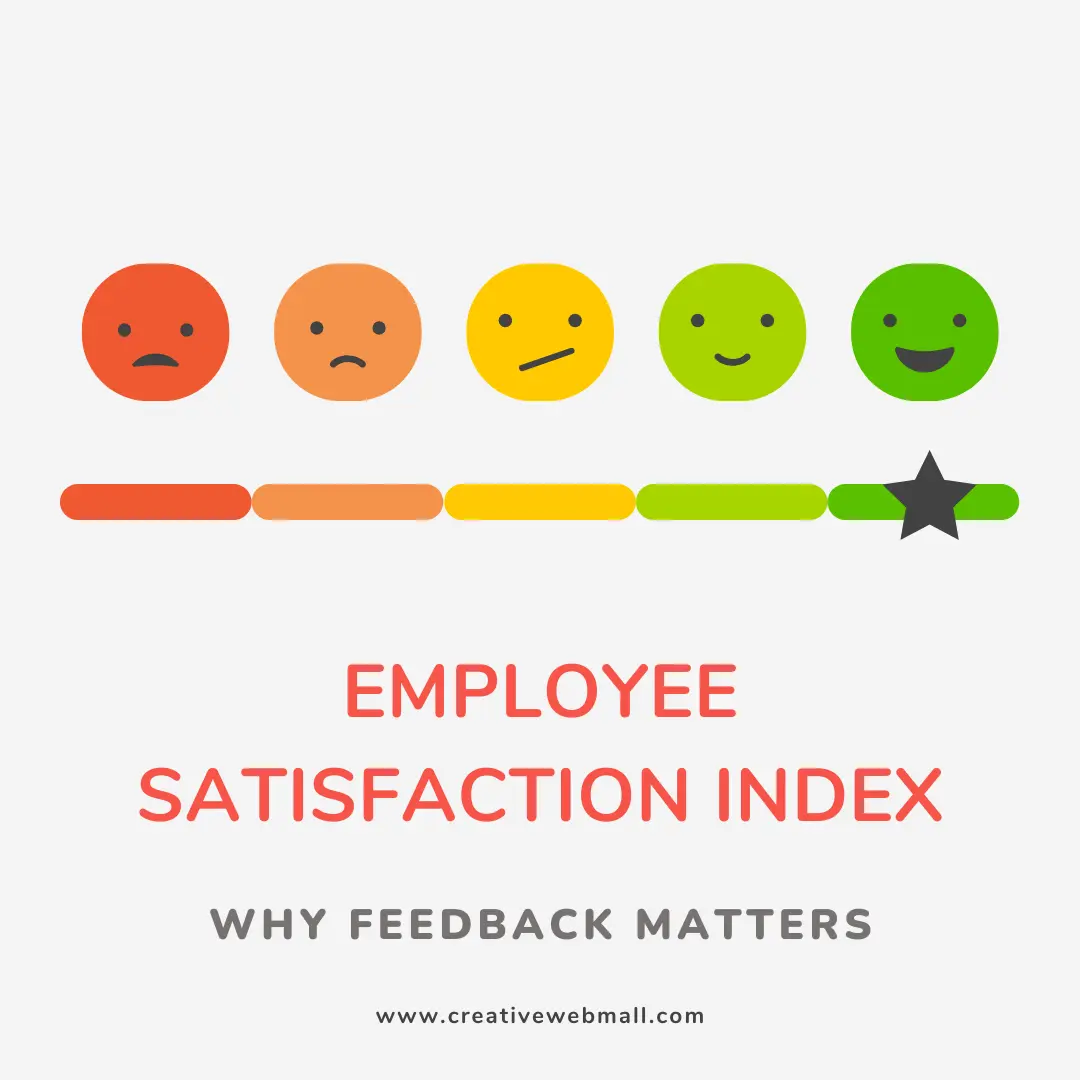
Employee Satisfaction Index (ESI): Why It Matters
The Employee Satisfaction Index (ESI) is a metric used to gauge how happy and fulfilled employees are with their work experience.
It’s essentially a score that reflects overall employee sentiment within a company.
Here’s why tracking employee satisfaction and boosting employee engagement are crucial:
- Improved Business Performance: Happy employees are more productive, engaged, and less likely to leave. This translates to better customer service, higher quality work, and ultimately, increased profitability.
- Reduced Turnover Costs: Replacing employees is expensive. A high ESI can help retain top talent, saving the company significant resources.
- Stronger Employer Brand: A positive work environment attracts better candidates, making it easier to recruit and hire qualified employees.
- Enhanced Innovation & Creativity: Engaged employees are more likely to think outside the box, come up with new ideas, and contribute to the company’s success.
- Improved Customer Experience: Happy employees are more likely to provide excellent customer service, leading to higher customer satisfaction and loyalty.
- Positive Work Environment: Tracking ESI helps identify areas for improvement, leading to a more positive and supportive work environment for everyone.
How do you measure the Employee Satisfaction Index?
There isn’t one universally accepted formula for calculating the Employee Satisfaction Index (ESI).
However, there are two common approaches:
1. Average Response Method:
This method is relatively simple and focuses on the average score of employee responses to a satisfaction survey. Here’s how it works:
Step 1:
- Conduct a Survey: Design a survey with questions that gauge various aspects of employee satisfaction, such as work environment, compensation, benefits, career development opportunities, etc. Use a Likert scale (e.g., 1= Very Dissatisfied, 5= Very Satisfied) for responses.
Step 2:
- Calculate Average Score: Add up the individual scores from all respondents and divide by the total number of respondents.
ESI = (? Scores) / Number of Respondents
2. Weighted Average Method:
This method assigns different weights to different survey questions based on their perceived importance to employee satisfaction. Here’s the process:
Step 1:
- Conduct a Survey: Similar to the average response method, you design a survey with different satisfaction questions.
Step 2:
- Assign Weights: Determine the relative importance of each question to overall employee satisfaction. Assign a weight (e.g., 1 to 5) to each question, with higher weights reflecting greater importance.
Step 3:
- Multiply Scores by Weights: Multiply each respondent’s score for a question by the corresponding weight assigned to that question.
Step 4:
- Calculate Weighted Average: Add up the weighted scores for all questions from all respondents and divide by the total possible weighted score (sum of all weights multiplied by the number of respondents).
ESI = (? (Score x Weight)) / (? Weights x Number of Respondents)
Considerations:
- Regardless of the method used, ensure your survey questions are clear, concise, and easy for employees to answer.
- Maintain anonymity for responses to encourage honest feedback.
- Track trends over time to measure progress and identify areas that need improvement.
- Consider using a combination of quantitative (survey scores) and qualitative data (employee comments) to get a more holistic picture of employee sentiment.
Remember, the ESI is a starting point for understanding employee satisfaction. The real value comes from analyzing the data, identifying key drivers of employee satisfaction (or dissatisfaction), and taking action to improve the work experience for your employees.
Boosting Employee Engagement: Keys to Success
Here are some ways to improve employee engagement and satisfaction:
- Clear Communication: Keep employees informed about company goals, strategies, and decisions.
- Recognition & Appreciation: Acknowledge and reward employee contributions.
- Opportunities for Growth & Development: Offer training programs, career development opportunities, and chances for advancement.
- Work-Life Balance: Promote a healthy work-life balance by offering flexible work arrangements and encouraging breaks.
- Positive Work Culture: Foster a culture of trust, respect, and collaboration.
- Meaningful Work: Help employees see how their work contributes to the company’s overall success.
By tracking ESI and implementing strategies to boost employee engagement, companies can create a happier, more productive, and ultimately more successful workforce.
Categories: